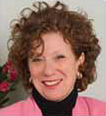The Frame
By Joy A. Dryer Ph.DMany mediators and Collaborative Divorce [CD] practitioners describe the CD process as a container for the couple separating or divorcing. There's a frame, both theoretical and practical, containing the process in which an Agreement is worked out among professionals and clients. This article expands the idea of "container" to describe the FRAME as METAPHOR for a "holding" environment [Winnicott, 1965]. This frame holds a mediation or CD process of multidimensional elements – 7 of which are described here. [ NB: "Mediation" and "Collaborative Divorce" Processes are abbreviated here as "CD" for easier reading.]
THEORY. The concept of Frame is a long respected one in the psychoanalytic literature, like a "third" person [element] in the room with professional and client -- or the analyst and patient [see Freud, 1913, 1924a; Winnicott, 1965; Green, 1986; Ogden 1994]. I'm transposing the importance and role of the Frame from the therapy setting, into the divorce process, and integrating it with elements from an organizational systems approach. That is, "framing" is the action part of the process with braids emotional, financial, and legal elements into an integrated whole. Organizationally, from a Gestalt perspective, the organizational whole is greater than its parts.
FRAME AS METAPHOR FOR SAFETY. The professional[s] is responsible for providing a sense that the CD process is a "safe" one, in spite of inevitable bumps during the journey. This is important for all of us, but especially for those who enter the process often feeling unsafe in her/his own skin, and brings a specific range of fears and anxieties to the CD process. .
FRAME REFLECTED IN 7 SYSTEMS ELEMENTS. Professionals set and keep the frame. Clients then take up their roles in tending and growing the contents inside that frame. The Frame defines a temporary organization with these 7 elements: a defined mission, authorizations, boundaries, norms, roles, and tasks, within a CD culture.
Authorizations relate to seeking permission or consent to a process, not an agreement to specific content. E.g. we seek clients' authorizations to search out specific data on their behalf.
Boundaries are crucial to feel safe within the frame: they keep reliable and consistent time and space and responsibility expectations. Who is accountable for doing what is another important boundary. That is, who does what how and when.
Culture describes our CD foundation: the broad set of 'collaborative' beliefs and behaviors and values.
[The] Mission is to product a document via a respectful transparent process which helps clients define their values and how they would like to live their lives post-divorce.
Norms are acceptable standards of behaviors shared by the professionals. Practice groups may have norms e.g. Concepts such as respect and transparency. Or specific behaviors e.g, how to address emails, or [de]briefing procedures. With CD Teams, each may develop its own norms.
Roles differ among professionals/ CD Teams. Each of us uses specific skill sets within expected behavior patterns. The role of "client" also carries expectations and responsibilities
Tasks are objectives along each Stage of the Roadmap, involving information gathering, brainstorming, and decision making.
Any professional can describe each of the 7 essential elements to clients. In general, the metaphor of FRAME needs to be watched and nurtured and in the forefront for the transparency of this CD process to work on the behalf of safety at each step in the journey. And specifically, the ongoing tracking of the 7 elements individually can continuously clarify the process at each stage, and herald a more successful CD outcome. When any element is compromised, as is likely, understanding how, and especially why, can provide crucial data. How the professional repairs the frame will provide crucial modeling for the couple as they move forward and into post-divorce.
In Sum, like the wooden planks around a garden, the FRAME is a clear and consistent boundary making a constant and secure ground inside which it is safe to plant ideas and to grow as a person, for clients as well as for the professionals. Hence, we all need to be aware of the elements of the frame; how to track the elements; repair them when compromised, and continue to tend them as you would any garden.

